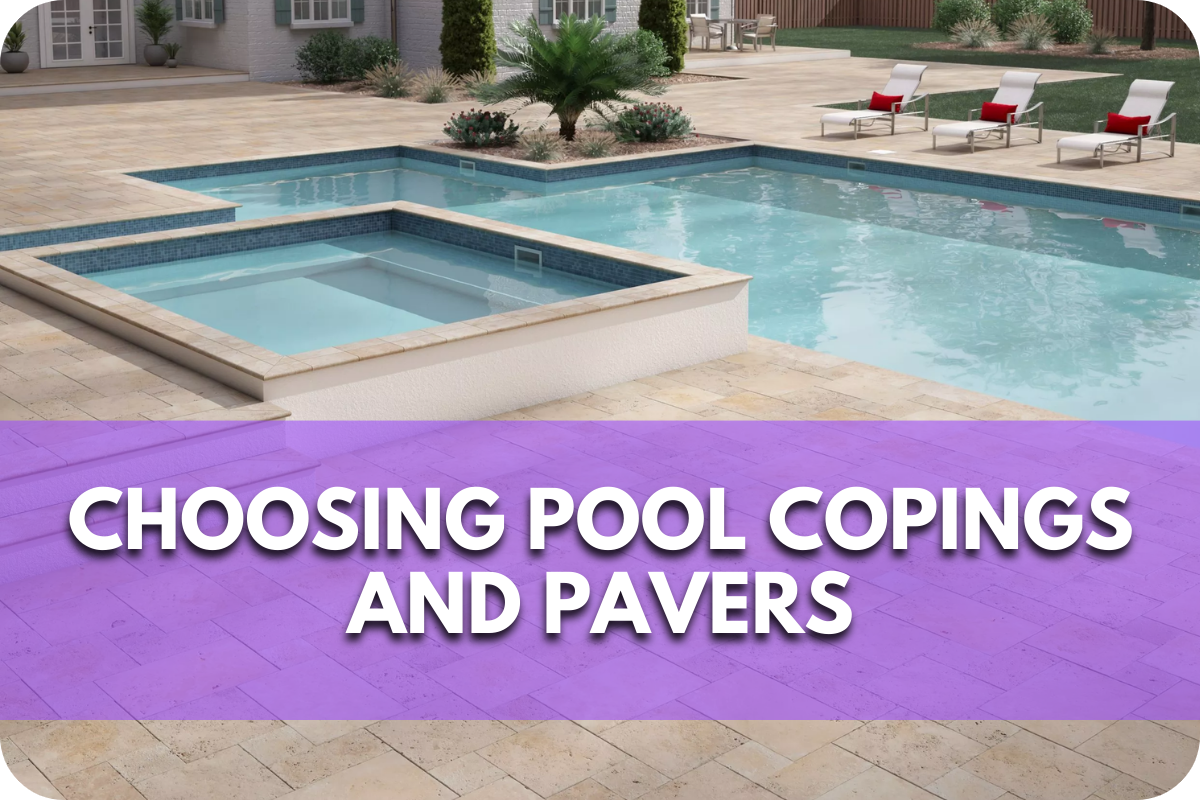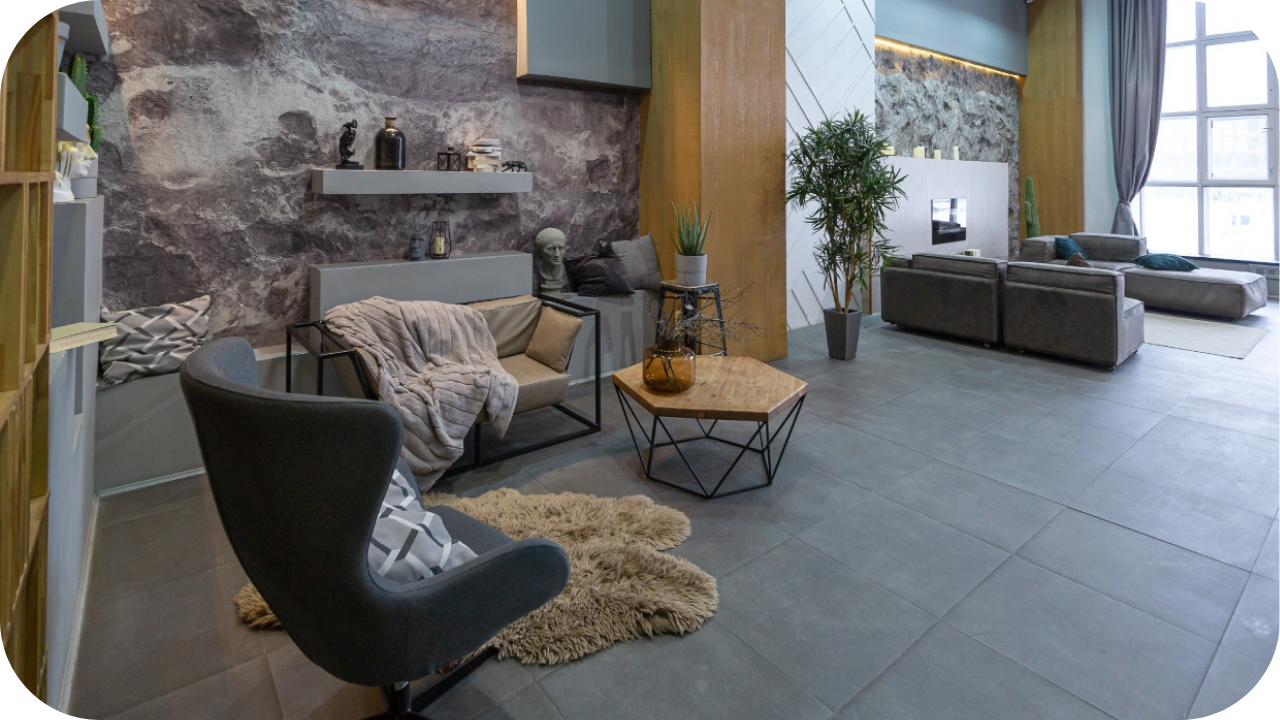
Struggling to choose the right pool copings and pavers for your project?
With so many options available, selecting the perfect materials can be overwhelming and lead to costly mistakes.
Our comprehensive checklist simplifies decision-making, ensuring you choose the best pool copings and pavers for a stunning and durable finish.
1. Assessing Your Needs
Assessing your needs before choosing pool copings and pavers ensures a functional and aesthetically pleasing result. Start by considering the size and shape of your pool.
Larger pools may require more durable materials for extensive use. In contrast, irregularly shaped pools benefit from flexible paver options that can be easily customised to fit curves and unique angles.
Next, determine the usage and traffic patterns around your pool area. High-traffic zones, such as the main entrance to the pool or lounging areas, will need pavers that can handle frequent foot traffic and potential wear and tear.
Slip-resistant materials should be considered for safety, mainly if children or the elderly use the pool.
Additionally, consider your area’s climate; some materials perform better in certain weather conditions, providing better longevity and maintenance ease.
2. Material Selection
Choosing suitable materials for pool copings and pavers is crucial for aesthetics and functionality. Natural stones like limestone, travertine, and sandstone are favoured for their ability to stay cool underfoot, making them comfortable and safe around the pool.
Concrete pavers are a versatile and budget-friendly alternative, available in various colours and textures, though they may need more maintenance than natural stone.
Porcelain pavers are also an excellent option, offering stylish looks and high resistance to heat. Prioritising salt resistance and durability ensures a safe and long-lasting pool area.
3. Safety Considerations
When selecting pool copings and pavers, safety should be a top priority. A key consideration is the design of the coping edges. Bullnose edges, which feature a smooth, rounded shape, are particularly effective in preventing injuries by eliminating sharp corners.
This design provides a comfortable grip for swimmers and a safe transition from the pool deck to the water.
Proper water drainage is essential to avoid water accumulation around the pool area, which can lead to slippery conditions and potential hazards. Pool coping should directly splash water back into the pool or toward deck drains, preventing seepage and maintaining the pool’s structural integrity.
Additionally, the materials used for pool copings and pavers must withstand exposure to pool chemicals, UV radiation, and varying weather conditions. Natural stone and porcelain are durable choices that can endure these harsh conditions, ensuring long-term safety and performance.
4. Aesthetic Appeal
When selecting pool copings and pavers, their aesthetic appeal significantly enhances the overall look of your pool area. The right materials can transform your pool into a visually stunning focal point of your outdoor space.
Natural stone options like travertine, limestone, and sandstone offer timeless beauty with unique textures and earthy tones. These materials blend seamlessly with natural landscapes, providing a classic and elegant look.
Porcelain pavers are another excellent choice, known for their durability and aesthetic versatility. They come in a wide range of designs and finishes, from sleek and modern to rustic and textured, making it easy to achieve your desired look.
Porcelain’s resistance to staining and fading ensures that your pool area maintains its beauty over time.
Additionally, the selection of bullnose edges or other profiles can add to the visual appeal by providing smooth, rounded edges that are safe and visually pleasing. These design elements contribute to a cohesive and polished look, harmoniously tying together the pool and surrounding landscape.
5. Durability and Maintenance
When choosing pool copings and pavers, durability and maintenance are key factors that ensure your pool area’s longevity and aesthetic appeal. Materials like natural stone, concrete, and brick are famous for their resilience and ease of maintenance.
Durability
Natural stone options such as travertine, limestone, and granite are renowned for their durability. These materials can withstand harsh weather conditions, UV exposure, and contact with pool chemicals. Their inherent strength makes them less prone to cracking and chipping, ensuring a long-lasting finish around your pool.
Maintenance
Regular maintenance is essential to keep pool copings and pavers looking their best. Cleaning with water and mild detergent is usually sufficient to remove dirt and debris. Pressure washing can be effective for more stubborn stains, but using the appropriate pressure setting is crucial to avoid damaging the pavers.
Sealing is a vital maintenance step for both natural stone and concrete. Applying a high-quality sealant helps protect the materials from water penetration, staining, and chemical damage.
Regular sealing can significantly extend the lifespan of your pool coping and pavers, reducing the need for frequent repairs or replacements.
6. Budget and Cost
When selecting pool copings and pavers, considering your budget and the associated costs is crucial to balancing quality and affordability. The cost can vary significantly based on the materials chosen, the pool’s size, and the installation’s complexity.
7. Installation Process
Installing pool copings and pavers is a meticulous process that requires careful planning and execution to ensure durability and aesthetic appeal. Here’s a step-by-step guide to help you understand the process:
Step 1. Preparation and Planning
Begin by measuring the pool perimeter accurately to determine the number of pavers needed. Mark the layout with a chalk line or spray paint, ensuring you account for any curves or irregular shapes. Clear the designated area of debris, plants, or old materials to create a clean workspace.
Step 2. Excavation and Base Preparation
Excavate the marked area to a depth that accommodates the paver thickness plus an additional 6 inches for the base material.
Ensure the excavation slopes away from the pool to facilitate proper drainage. Compact the soil thoroughly using a tamper, then add a 4-inch layer of crushed stone as the base, compacting it to create a stable foundation.
Step 3. Installing Edge Restraints
Place edge restraints along the perimeter, ensuring they are flush with the pool’s edge. Secure them with stakes 12 to 18 inches apart to maintain alignment and prevent shifting. Use a level to check that the restraints are even and adequately aligned.
Step 4. Laying the Coping Pavers
Spread a layer of coarse sand over the compacted base, levelling it with a 2×4. Begin placing the pavers from one end of the pool, ensuring they are flush with the edge restraints and each other.
Use a rubber mallet to tap the pavers into place, maintaining consistent gaps between them. Use spacers if necessary to achieve uniform spacing.
Step 5. Filling Joints with Sand
After all the pavers are laid, sweep polymeric sand into the joints. This sand hardens when moistened, providing stability and preventing weed growth. Use a broom to distribute the sand evenly, ensuring it fills the gaps. Follow up with a light mist of water to activate the polymeric sand.
Step 6. Sealing the Pavers
Once the pavers are dry, clean them thoroughly to remove any debris. Apply a suitable sealer to protect the pavers from stains and weathering, enhancing their longevity and appearance. Follow the manufacturer’s instructions for the sealer application and curing time.
8. Environmental Impact
Considerating the environmental impact of pool copings and pavers is essential for making sustainable choices. Natural stone pavers, such as limestone, sandstone, and granite, offer significant eco-friendly benefits due to their natural origin and durability.
Unlike man-made materials, natural stone pavers require minimal processing, which reduces their carbon footprint. Moreover, their long lifespan and ability to be recycled further enhance their sustainability.
Porcelain pavers are another sustainable option, known for their durability and low maintenance needs.
They are non-porous, which reduces water absorption and the need for chemical sealants. Additionally, porcelain pavers are often produced using eco-friendly practices and can be recycled at the end of their lifespan.
Conclusion
Choosing the right pool copings and pavers is crucial for safety, durability, and aesthetic appeal.
Use this checklist to make a well-informed decision and ensure your pool area meets all your needs. For expert advice and quality materials, contact Splendour in Stone today. Elevate your pool project with the best choices available!
More To Explore

Stone Accents: Adding Charm to Modern Interiors with Natural Stone
Modern interiors seek a balance of style, durability, and uniqueness. Natural stone accents are a game-changer, adding timeless elegance and character to any space. As

Natural Stone Features That Will Transform Your Living Room
Natural stone elevates any living room with elegance, texture, and timeless appeal. Its versatility allows it to enhance both modern and traditional spaces. From stone


